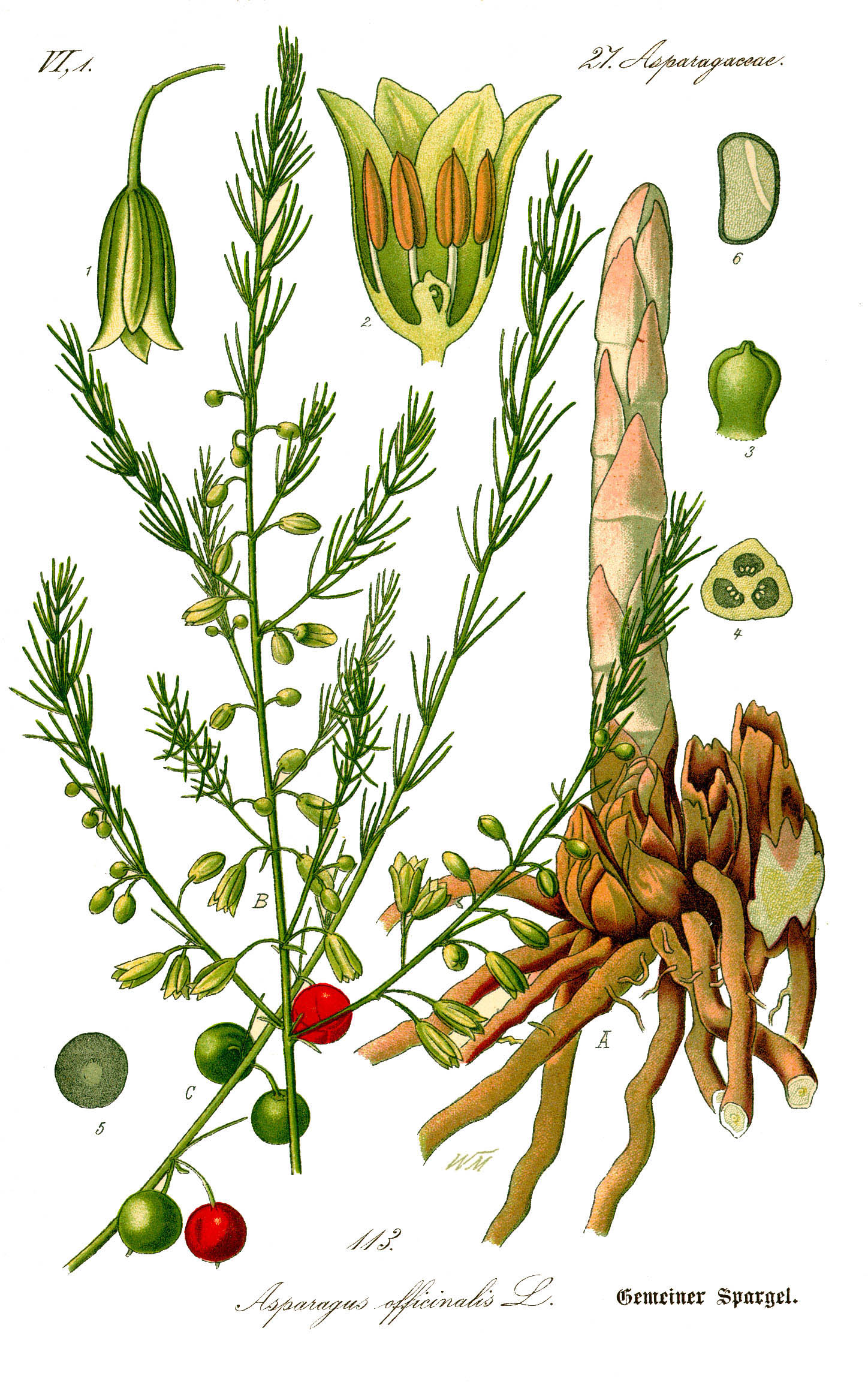courtesy of wikipedia
asparagus officinalis
1885 german botanical illustration
sautéed asparagus with almonds
appliances
wok
large spoon or stirring utensil
cutting board
chopping knife
ingredients
batch of fresh asparagus, cleaned
a few garlic cloves, peeled and sliced
a handful or two of unsalted raw or roasted almonds, chopped
a tablespoon or two of canola oil
seasonings, to taste
sea salt (alternatively, soy sauce)
freshly ground black pepper
note: if you only have salted almonds in the pantry, go ahead, but be careful with any additional salt or soy sauce. just leave either out altogether.
courtesy of wikipedia
photographer: muffet
batches of asparagus
procedure
1. on a cutting board, cut off the ends of your lovely asparagus stalks. then cut the stalks into two or three sections, depending on your preferences.
2. oil your wok with the canola oil and heat on a medium to high flame.
3. when your wok is hot, add your chopped garlic, and stir and brown just slightly before adding your asparagus stalks.
4. add asparagus stalks, chopped almonds, salt, and pepper, and stir and toss regularly for a few minutes or more, depending on desired tenderness.
Serve up and enjoy!
Pleasant on brown rice, by itself, on salads with Provençal Aioli, with an omelette, or as an accompaniment to just about any meat, fowl, or fish entrée.
Now I am thinking about white wine ..
courtesy of wikipedia
photographer: Longhair
asparagus growing in mildura,
victoria, australia
other stuff
i thought of asparagus recipes because today's seattle times reports the asparagus harvest underway in eastern washington due to rising temperatures.
according to wiki, asparagus is high in antioxidants, vitamin C, and a low calorie source of folate and potassium.
does your pee smell after you eat it?
wiki reports studies indicating that it does, indeed, but not all people have the olfactory mechanisms to smell it (the way some people have inny belly buttons and some people have outty belly buttons - or the way some people can curl their tongue, and others cannot - etc). there are some contradictory findings, however - if you don't smell it, you may be among a minority that does not produce this odor. science has yet to draw firm conclusions here!
some of the "volatile organic compounds" responsible for the smell are
with methanethiol and dimethyl sufide the most "pungent" and dimethyl sulfoxide and dimethyl sulfone the "sweetest." says wiki,
These compounds originate in the asparagus as asparagusic acid and its derivatives, as these are the only sulfur-containing compounds unique to asparagus. As these are more present in young asparagus, this accords with the observation that the smell is more pronounced after eating young asparagus. The biological mechanism for the production of these compounds is less clear.
the odor was first scientifically investigated by polish chemist and doctor, Wilhelm Marceli Nencki, 1847-1901, whose main scientific interests revolved around "the chemistry of purines and the biological oxidation of aromatic compounds." He attributed the smell to methanethiol.
courtesy of wikipedia
Wilhelm Marceli Nencki, 1847-1901
polish chemist and doctor
who first scientifically investigated
the reasons for smelly urine excreted by humans
after eating asparagus
and a most interesting fellow, engaged in a peaceful pursuit!
- o.s.r.




No comments:
Post a Comment